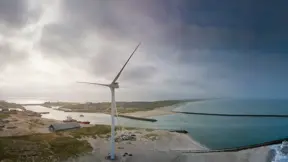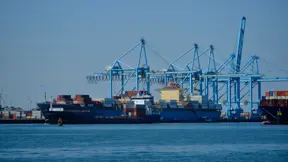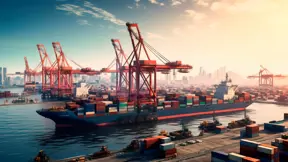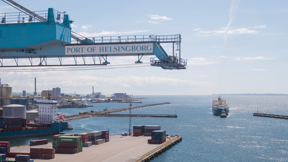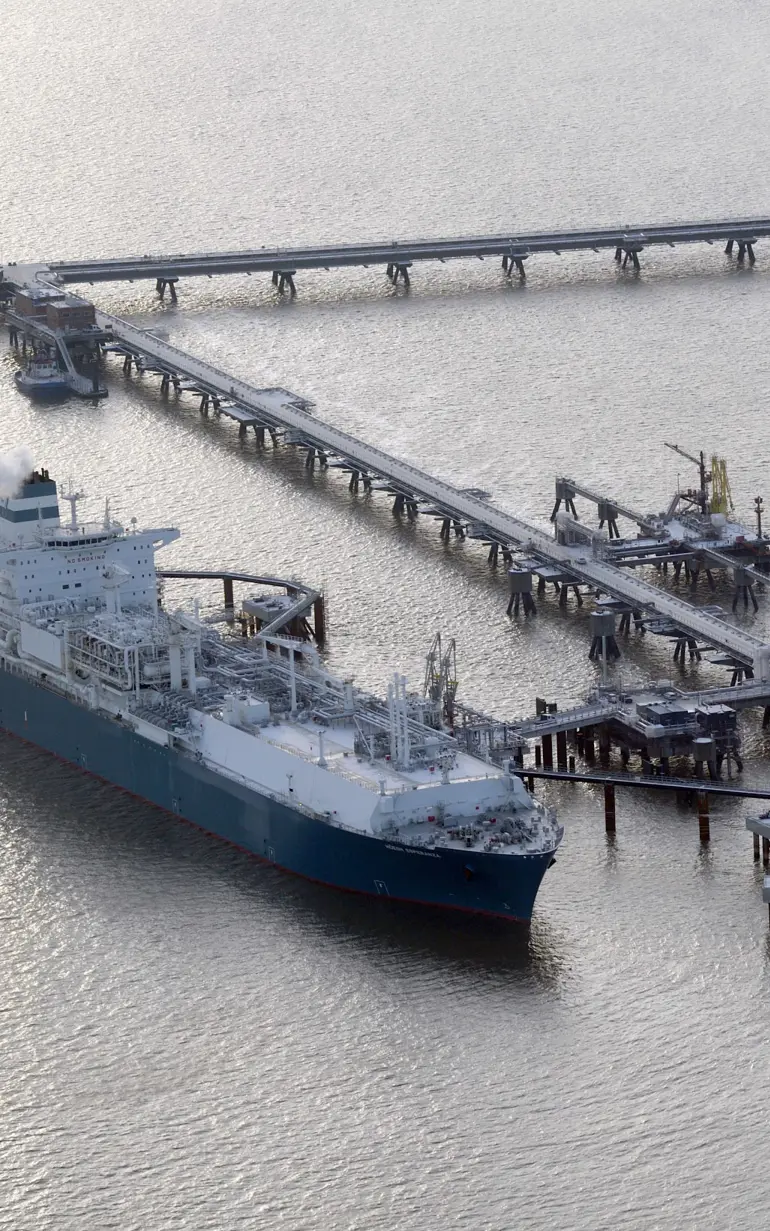
Lowering environmental impact of Germany’s first floating LNG terminal
Marine modelling studies contributed to the safe design of Wilhelmshaven LNG terminal and validated low environmental impact on nearby waters and nature reserves
Germany relies on various energy sources to ensure supply for citizens and businesses. In the wake of the Russia-Ukraine conflict, Germany took the initiative to build LNG receiving facilities at its Northern coast. Uniper started a project to build and operate the country’s first floating liquified natural gas (LNG) terminal with support from the government, which could provide up to 6% of the German gas demand. In building the terminal, there is a need to comply with safety and environmental obligations. DHI’s marine modelling studies and environmental impact assessments (EIAs) have helped Uniper establish safe design conditions and validated low environmental impact on nearby waters and nature reserves related to the terminal construction.
Challenge
Following the geopolitical situation and global natural gas supply crisis, Germany’s first LNG terminal in Wilhelmshaven gained rapid regulatory authority approval for construction in 2022. The terminal was built as a Floating Storage and Regasification Unit (FSRU), which is in fact a special vessel that receives LNG from arriving vessels and converts it back to its gaseous state. The vessel will have a fixed and secure berth at the existing transshipment facility.
During the planning and implementation phase of port and terminal projects, the safety of terminal design and accurate predictions of potential impacts on marine ecosystems are important factors to consider. What’s more, Uniper was facing a tight timeline to ensure that the country’s energy supply would not be disrupted. As such, they urgently needed to establish environmental design conditions for the Wilhelmshaven terminal to quantify and manage risks and impacts.
Solution
DHI provided Uniper with modelling studies and EIAs related to the construction of the Wilhelmshaven terminal. The modelling results contributed to the terminal’s design, safety and operability, and the EIAs ensured that environmental impacts were kept to a minimum. The solution included:
- A detailed metocean study to get a full picture of the hydrographic conditions, such as wind, water levels, currents and waves
- Environmental data for navigational safety for inbound and outbound carriers carried out in a Full Mission Bridge Simulator by our partner Nautitec
- An investigation of dynamic mooring forces and vessel motions not only for the Wilhelmshaven terminal itself but also when an LNG carrier is moored simultaneously. This led to the identification of design conditions for the bollards and fenders of the terminal and threshold conditions for safe mooring.
- Environmental impact assessments
- Biocide concentrations: The public and mussel farmers in the area were concerned about the possible increase in biocide concentrations due to the terminal in Wilhelmshaven. The LNG terminal has been in operation for a year and is regularly monitored by the authorities with regard to the use of biocides. A so-called monitoring, which examines the effects on the Jade and the Jade Bay, has not identified any negative effects on the water after one year of operation. The discharge of cooled water in summer and heated water in winter was also no longer measurable in the water itself.
- Fish and larvae migration: As the released water from the terminal is either warmer or colder than the ambient water, there were concerns that fish and larvae would not swim through it. DHI validated that no ‘temperature barriers’ have formed around the terminal and thus fish and larvae migration would not be affected. DHI also helped assess the potentially dangerous areas for fish and larvae in the vicinity of the terminal’s inlets. Knowledge of the extent of the affected area would allow Uniper to implement compensation measures.
Results
In December 2022, the Wilhelmshaven terminal started operations with its first import of LNG, sufficient to supply energy to 50,000 German households for a year. The terminal will handle 6% of Germany's future gas requirements and serve as a bridging technology towards a green future. In a later phase, the terminal will be equipped to switch to imports of low-carbon energy sources such as green hydrogen. DHI’s solution has:
- Contributed to the fast operation of the Wilhelmshaven terminal thanks to accurate simulation covering hydrodynamics, thermodynamics, chemistry, waves, wind and dynamic mooring
- Validated the low environmental impact of the terminal construction on nearby waters and nature reserves
- Helped Germany ensure sufficient energy to power homes and businesses
Client:
Uniper SE
Location:
Germany
Related SDG(s):
SDG 7: Ensure access to affordable, reliable, sustainable and modern energy for all
Technology:
‘DHI has supported Uniper in the successful application of the water law permit for the LNG terminal in Wilhelmshaven. Their high expertise, outstanding simulation competence and expert opinions have contributed greatly to getting the terminal operational in record time.’
Christian Janzen, General Project Manager
LNG Terminal Wilhelmshaven, Uniper
About our client
Düsseldorf-based Uniper is an international energy company with activities in more than 40 countries. The company and its roughly 7,000 employees make an important contribution to supply security in Europe, particularly in its core markets of Germany, the United Kingdom, Sweden and the Netherlands.
Uniper’s operations encompass power generation in Europe, global energy trading and a broad gas portfolio. Uniper procures gas – including liquefied natural gas (LNG) – and other energy sources on global markets. The company owns and operates gas storage facilities with a total capacity of more than 7 billion cubic metres.
You may also like
How can we help?
With our global network of offices, we make sure you get the right answers to your local needs. Tell us about your water challenges and we will get back to you.
